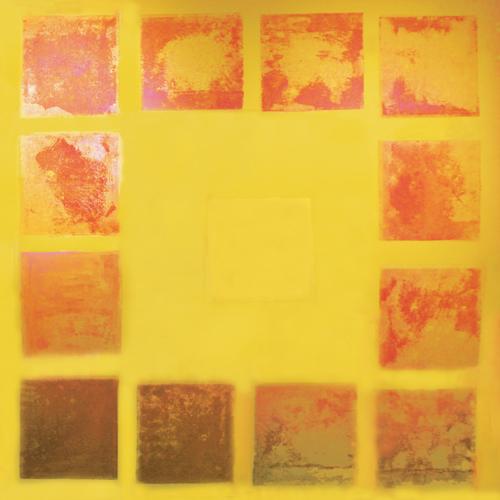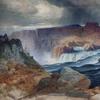Anita Shapolsky Gallery presents "Inspiration & Exploration"
- NEW YORK, New York
- /
- April 02, 2019

Inspiration & Exploration
April 23 - August 16, 2019
Opening Reception: Tuesday, April 23, 6 - 8pm
Anita Shapolsky Gallery is pleased to announce Inspiration & Exploration, a group show featuring paintings, paper works, and sculpture from some of the greatest abstract artists of the 20th century. Inspiration & Exploration showcases how these artists chose to define themselves and their world in a century marked by two world wars, rapid technological and economic change across the globe, radical social movements, and sex, drugs, and rock and roll. Releasing themselves from many of the traditional boundaries of technique, composition, and subject matter, abstract artists were free to investigate non-traditional media, concepts, and visual languages. This exhibition investigates these artists’ sources of inspiration and the various ways they explored their personal style and medium.
FEATURED ARTISTS
ALCOPLEY: Working under this pseudonym, Alfred Lewin Copley helped to found The Club in 1949, an intellectual meeting place for artists in the New York School. He also founded the field of hemorheology (study of blood flow) and this influenced his frequent incorporation of vertical paint drips in his paintings and paper works.
MARIO BENCOMO continues to be inspired by natural forms, like that of the almond, that appear throughout human history. Bencomo also explores poetry’s place in the visual language of abstract art by directly placing text from poems throughout his works.
JAMES BROOKS, a large-scale painter and WPA muralist, served in World War II like many other artist seduced by the GI Bill. He explored the very process of painting, often working from both the front and back of the canvas, allowing paint to seep through: a metaphor for life’s mistakes and mishaps.
NORMAN CARTON was also a WPA muralist, but he also explored other mediums. Most notably, Carton designed hand-made fabric for high-end fashion houses like Lord & Taylor.
CHRISTO’s sketches illuminate his playful process of wrapping sculptures and other architectural elements with fabric, simultaneously covering and drawing attention to these elements.
NASSOS DAPHNIS: While primarily known for his geometric, hard-edge paintings, Daphnis preferred softer colors and more natural forms in his early works of the 1940s, often referencing mythical figures like Icarus.
SONIA GECHTOFF applied sharp, dynamic, and often textural areas of paint directly with her palette knife. This technique was favored by other Abstract Expressionists, especially those who, like Gechtoff, studied art in the Bay Area during the 1950s.
TONY HARRISON took inspiration from the bold use of solid colors by artists like Motherwell. Harrison could transform natural materials like wood by shaping it into painted, strict geometric forms to the point where it became plastic, un-natural, and almost unrecognizable.
STANLEY WILLIAM HAYTER was a man of many places (England, Paris, and New York) and cannot be claimed by any of them. Hayter was one of the greatest teachers of printmaking in Paris at his studio, Atelier 17.
BUFFIE JOHNSON shifted her style and medium over several decades to reflect her changing perspectives of the cyclical nature of life. A self-professed feminist, Johnson was also a published author of Lady of the Beasts: The Goddess and Her Sacred Animals, which traces imagery of the Goddess across history and cultures.
ALBERT KOTIN was a global artist and teacher who worked with prominent Abstract Expressionists. Kotin’s earlier work was clearly influenced by De Kooning and Pollock, but he ultimately developed his own signature style, distinguished by colorful vortexes of textural brushstrokes.
FRED MITCHELL co-founded the Tananger Gallery and participated in other artist-run communities in New York like those on Coenties Slip. Michell brought order to his explosive colors with careful, thin applications of paint.
LOUISE NEVELSON established her presence in an otherwise male-dominated practice of monumental sculptural installations. While widely acclaimed for her signature mono-chromatic painted wood pieces, Nevelson also created collages using paper and other found materials.
BETTY PARSONS and her renown gallery were integral in establishing Pollock and other Abstract Expressionists. Parsons participated in the New York School as well, but she was too ethical and humble to show her paintings at her own gallery.
IRVING PETLIN attempted to visually catalog society - both the good and the ugly - using a style that was neither abstract nor figurative.
ANNE RYAN transitioned from writing to painting through the encouragement of Hans Hoffman, creating collages and prints on paper and fabric. She studied at under Stanley Hayter at Atelier 17.
WILLIAM SAROYAN was also an author turned artist. He completed numerous gestural paintings and watercolors that vacillated between playful and serious, minimal and complex, ordered and chaotic.
NANCY STEINSON explores the materiality of various metals. She combines organic curves and geometric lines in her solid forms to suggest an energy moving outwards and through her sculptures.
YVONNE THOMAS explored the symbolic potential in color through both gestural work and structured paintings, embracing and rejecting the grid.
ANITA SHAPOLSKY GALLERY
152 East 65th Street
Hours: Tues - Fri, 11:00am - 6:00pm
Saturdays by appointment
















